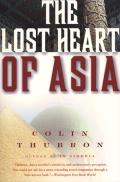
| Publisher: | Perennial |
| Copyright: | 1994 |
| Printing: | 2001 |
| ISBN: | 0-06-092656-4 |
| Format: | Trade paperback |
| Pages: | 367 |
The Lost Heart of Asia is an account of Colin Thubron's travel through central Asia very shortly after the collapse of the Soviet Union and the new independence of the former Soviet Republics. He starts in Turkmenistan, flying east from the Caspian to land in Ashkhabad (be warned that all of the spellings of place names vary, so on-line research into the background of the places visited requires a bit of persistance). From there, he travels through Uzbekistan (much of the book), Kyrgyzstan, and Tajikistan, before a final brief trip by plane into Kazakhstan.
I picked up this book after reading a New York Review of Books review of Thubron's later work, Shadow of the Silk Road, since I know almost nothing about this region of the world. The legendary city of Samarkand, the center of Tamerlane's empire and before that a key stop on the Silk Road, is the second-largest city in Uzbekistan. But these days, about all one hears of the former Soviet republics of Central Asia are distant stories of politics, vague mentions as neighbors of Pakistan or Afghanistan, and occasionally some mutterings about oil.
Thubron has an eye for scenery and a fascination with ruins, but he's even more interested in people. The strength of this book is its portrayal of the local inhabitants in the early 1990s in the midst of a significant political change. Thubron travels light, equipped with little but a small amount of money, travel papers, and a vast network of friends and acquaintances that give him preliminary contacts in most of the places he visits. And by his account, he just as often meets someone at random while walking the streets and ends up invited into their home, listening to the stories and meeting their family.
The story is personal, immediate, and not written with journalistic distant objectivity. Thubron does take some time to fill in the reader on the significance or bits of the recent history of places he visits, but even the history lessons are mingled with his perceptions, thoughts, and emotional reactions as a British traveller. In most places he visits, he focuses on some local resident, describing their lives in detail and using them to fill in the color of the surrounding area. These portraits cover a huge range, from angry Russians who still believe in the greatness of the Soviet Union to local tribesman and even Muslim scholars. They're captivating even when filled with mundane life. Thubron finds ways of using them to show different ways of looking at the world.
The portrait that comes out of this journey may be somewhat unsatisfactory to someone looking for a history of one of the most famous areas of the world. The world Thubron shows is one of uneasy national divisions, mixed tribal loyalities, a general flight of Russians, and an acceptance of the past that mingles with obliviousness. Many of the great cities were thoroughly sacked by the Mongols, and what's left is often abandoned to the dust after the death of the Silk Road, sitting in unremarked ruins next to mass-built Soviet cities. The juxtaposition is startling. The past shows through the most strongly in graves and shrines, mosques, and other remnants of Islam, but the religion Thubron shows is not the sort of organized religion that one sees elsewhere. It is heavily influenced by sufism, filled with ritual, and rests atop even older tribal patterns. Thubron repeatedly asks whether women might take up the veil, and is met almost uniformly with rejection of the idea ranging from vehement to bemused.
Uzbekistan gets the most attention perhaps because it has the most mingling of all of these elements. Kazakhstan gets the least attention I think because it's the most Russian, the most absorbed, the most tangled with the history of Russia rather than of Central Asia. Due to the date of the book, its main focus is the consequences of the Soviet collapse and the resulting uncertainty in those regions that are the least Soviet and the least Russian. The amount of upheaval is enormous, even in the majority of areas where the transition was peaceful. This gives The Lost Heart of Asia an oddly dated air; it's sometimes hard to believe, with all that's happened since, that the collapse of the Soviet Union was only fifteen years ago. But Thubron also shows the underlying tensions of life and tribe that are emerging after Soviet rule and the after-effects of the artificial formation of countries out of loosely-controlled tribal lands. The book has an air of digging half-forgotten history out from under an ever-present Soviet patina.
Thubron is an engaging writer who turns travel into an endless story. He can be a touch self-indulgent at times, but he feels honest and open about his reactions and his constant presence as an active character in the story provides the reader with a useful basis point. Since I read the book precisely because of how little I knew about its topic, I can't vouch for his accuracy, but the writing rings true. I would have preferred a bit more history and background due to my deficient education in world history and geography (and wish that the promised map was actually present in this trade paperback edition), but Thubron provides enough hooks to supplement the book with Google searches and a good encyclopedia.
I didn't take away any grand insights, but I feel like I now have a slightly better picture of a different part of the world and I was entertained while reading it. Recommended.
Reviewed: 2008-03-09